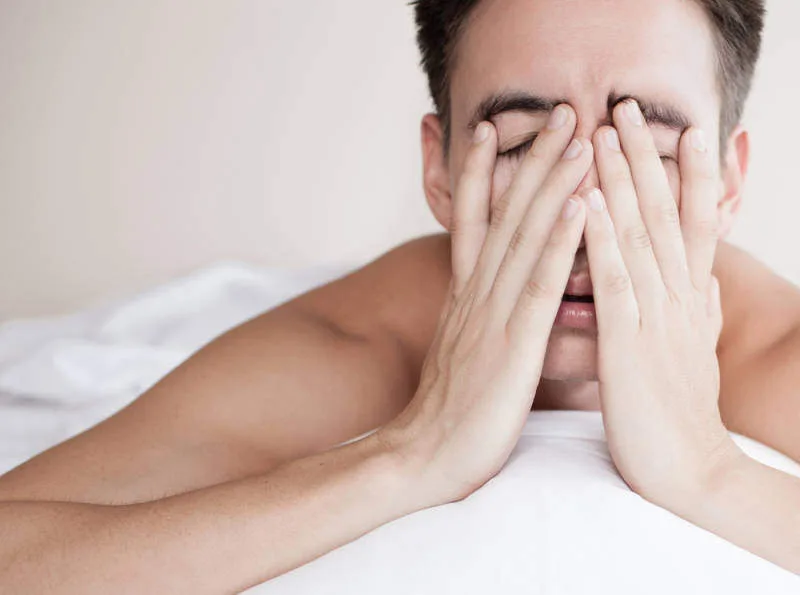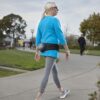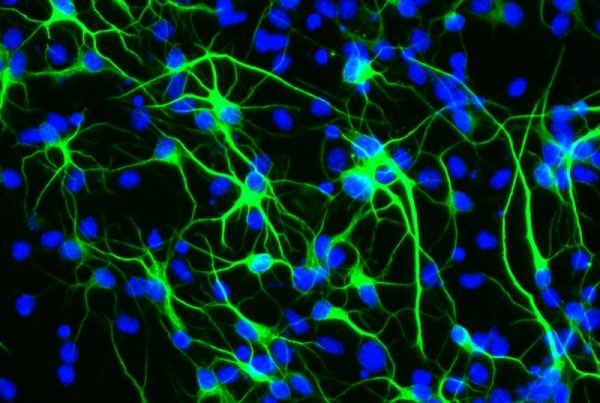In this post Martin Seeley, Senior Sleep Expert at MattressNextDay debunks whether trending sleep tips actually work. For truly better sleep, he recommends a science based technique known as ‘finger breathing.’ Finger breathing is a quick and easy self-hypnosis method that can help you remain calm, and is especially effective when combined with other science-backed sleep methods.
What really works? From mouth taping, morning shed, to finger breathing and more
Search volumes on social media for ‘why am I tired but can’t sleep’, ‘need help sleeping’ and ‘sleep hypnosis for insomnia’ have each soared by 5,000% in the last month, indicating a widespread trend of sleeplessness. Studies show that more than half of people report stress as the main factor impacting their sleep, making it more difficult to calm the mind before bed.
1. Mouth taping
Mouth taping is the practice of placing a piece of porous tape over the lips before bed to gently encourage nasal breathing during sleep. With 122.5k posts and counting (#mouthtape, #mouthtaping) on TikTok, the trend continues to soar on social media with users claiming that it helps them sleep for longer, feel more energized and even improve their jawline.
Research on mouth-taping for sleep is still limited and in its early stages. However, recent studies have shown that mouth taping could pose a serious risk of asphyxiation, or oxygen deprivation, particularly if you have nasal obstruction.2 An example of a nasal obstruction can be a deviated septum, a condition which 80% of the population is estimated to have.
Mouth taping with a particularly deviated septum can cause a potentially dangerous drop in oxygen levels by forcing you to breathe solely through a compromised nasal passage. That’s why it’s key to check with a sleep specialist before using mouth tape, instead of following advice from social media.
2. ‘Morning shed’
The ‘morning shed’ is a nighttime routine which involves applying several layers of skincare, hair and face-shaping products overnight, such as sheet masks, bonnets and chin straps, which are then removed (or ‘shed’) in the morning to reveal a polished appearance.
While for some, it may feel that the act of doing a skincare ritual is part of their wind-down routine, cueing the brain that it’s time for bed, the ‘morning shed’ can actually be disruptive to sleep. Physical discomfort caused by tight chinstraps, heavy sheet masks or restrictive bonnets can lead to overheating, pressure on the face, head and neck, as well as restricted movement – all of which can contribute to micro-awakenings that fragment sleep.

Image: popcorner/shutterstock
The occlusive layers of multiple face masks can also increase sweating and itchiness, which may disturb sleep quality. Face-shaping chin straps may also alter the natural position of your head and neck when sleeping, potentially impacting airflow, which could worsen snoring or sleep-disordered breathing conditions. Not only this, but the preparation of the routine itself can be overstimulating, delaying melatonin release.
3. Military sleep technique
The military sleep method is a relaxation routine said to have been developed during World War II to help soldiers fall asleep quickly, even in stressful or uncomfortable conditions. It involves relaxing your face completely, dropping your shoulders and arms, exhaling and relaxing your chest, relaxing your legs and clearing your mind for 10 seconds.
While the military sleep method has gained traction online, there’s little scientific evidence that it works as a universal fix for insomnia or poor sleep. The technique was designed for soldiers trying to sleep in stressful conditions, who may be experiencing sleep debt and extreme stress, rather than the average person struggling with their rest.
In that sense, it’s better thought of as a coping tool for people under pressure, rather than a long-term solution. To see tangible results and lasting improvements in sleep, research shows that building a consistent bedtime routine, managing stress and improving sleep hygiene are far more effective approaches.
4. Cognitive shuffling
Cognitive shuffling scrambles your thoughts so that your brain can’t try to make sense of things. It interrupts the processes of memory, evaluation, planning, scheduling and problem solving. It involves creating a mental playlist of random, unconnected words or images to disrupt rumination and anxiety-inducing thought patterns.
People who struggle with sleep often find themselves problem-solving, planning, or overthinking at bedtime. This keeps the mind in an alert, logical state that’s at odds with the calm, relaxed mindset needed for sleep. Cognitive shuffling is instead designed to replicate the random, image-based thoughts that we tend to see in the period between wakefulness and sleep (or the ‘hypnagogic’ state).
Although research on cognitive shuffling is limited, anecdotal stories and a small study of 154 students who reported problems with ‘pre-sleep arousal’ found that it did help reduce the time it took them to get to sleep.3In theory, it may be particularly useful for short-term sleep problems linked to anxiety or racing thoughts by limiting the mind’s tendency to spiral before bed.
5. Finger breathing
Finger breathing is a form of self-hypnosis that can be used to bring you back into a calmer and more rational state of mind during times of anxiety or restlessness. It involves a combination of touch and controlled breathing, cycling through a series of finger holds and hand movements whilst focusing on inhaling, and exhaling deeply.
Studies have shown that effectively controlling your breathing can not only help you relax mentally, but it also promotes the release of melatonin, the hormone produced by the pineal gland in your brain that is responsible for regulating your body’s circadian rhythm and managing your natural sleep cycle.
The five steps of finger breathing
Step 1:
Start by lying or sitting down in a comfortable position. Relax your breathing by inhaling more deeply and more slowly than you would normally.
Step 2:
Bring the fingers and thumb of one hand together in a relaxed pinched position. Using your other hand, cup and loosely rest your bunched fingertips in your palm. Count five relaxed breaths while keeping your hands in this position.
Step 3:
Swap hands and count five breaths again.
Step 4:
Next, make a thumbs up with one hand and then wrap the fingers of the other hand around the opposing thumb. Loosely hold your thumb while you count five relaxed breaths. Then swap hands and count five breaths again.
Step 5:
Repeat this process on the rest of your fingers, i.e. wrap the fingers of one hand around your opposing index finger and hold for five relaxed breaths, before switching hands and repeating the process.
The best techniques for sleep hygiene, according to the experts
When it comes to the techniques that we should actually incorporate into our nighttime routine to reap the benefits, “trendy” methods from TikTok may not be the best place to get the information that we need for our sleep to thrive.
- Keeping a consistent sleep schedule: Going to bed and waking up at the same time every day helps regulate the circadian rhythm. Inconsistent schedules disrupt the body’s internal clock, which can make it harder to fall asleep and wake refreshed.
- Creating a wind-down routine: Instead of TikTok “hacks,” we suggest 30 to 60 minutes of relaxing activities before bed. This can include reading, light stretching, meditation or a warm shower. This cues the brain that it’s time to shift from wakefulness to rest.
- Optimize your sleep environment: A cool, dark and quiet bedroom is proven to improve sleep quality. Blackout curtains, white noise machines or keeping the temperature around 18 to 20°C can make a real difference.
- Limit coffee, alcohol and screen exposure: Caffeine can stay in the system for 6 to 8 hours, disrupting deep sleep. Blue light from phones suppresses melatonin, so we recommend cutting screens at least an hour before bed.
- Daytime habits that support nighttime sleep: Regular exercise (but not too close to bedtime) improves sleep quality. Getting natural daylight early in the day strengthens circadian cues, which will help you to feel sleepy at night.
Final word
Sleep is critical to your good health and long term wellness. And yes, we understand it’s easy to get taken by social media trends, especially if you’re desperate to sleep. However, if you truly want to crack your sleep problems, then stick to scientifically tested techniques and therapies. Finger breathing has been studied extensively and shown to be effective in helping you control your breathing. This is turn helps you relax mentally, and also promotes the release of melatonin. Try finger breathing and get a better night’s sleep!
About the author
 Read more about Martin Seeley in our author biography below.
Read more about Martin Seeley in our author biography below.
Martin Seeley is the CEO of MattressNextDay and their Senior Sleep Expert. He is a well-known face within the sleep industry and has been published in countless worldwide publications and is active on social media.
The company commissioned the data used in this article.



![women [longevity live]](https://longevitylive.com/wp-content/uploads/2020/01/photo-of-women-walking-down-the-street-1116984-100x100.jpg)










